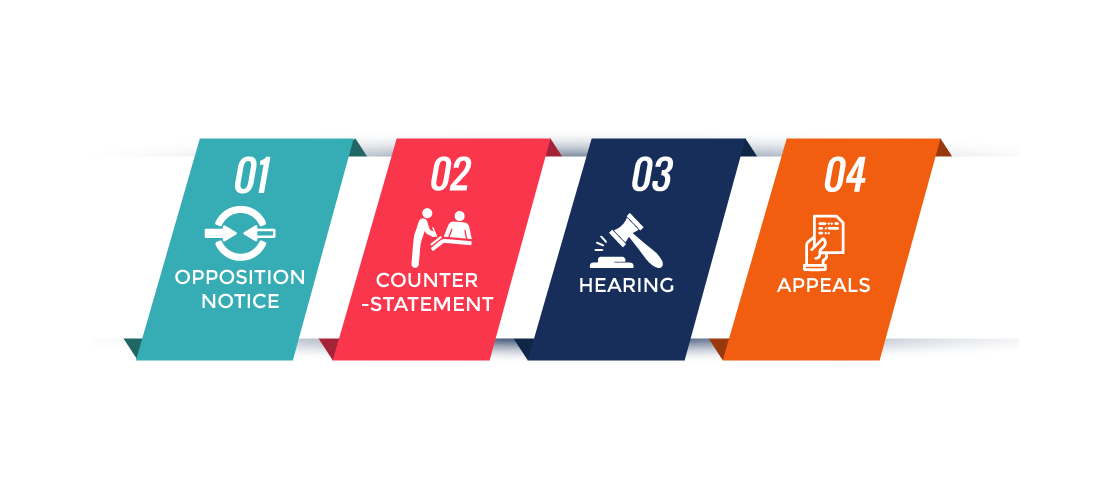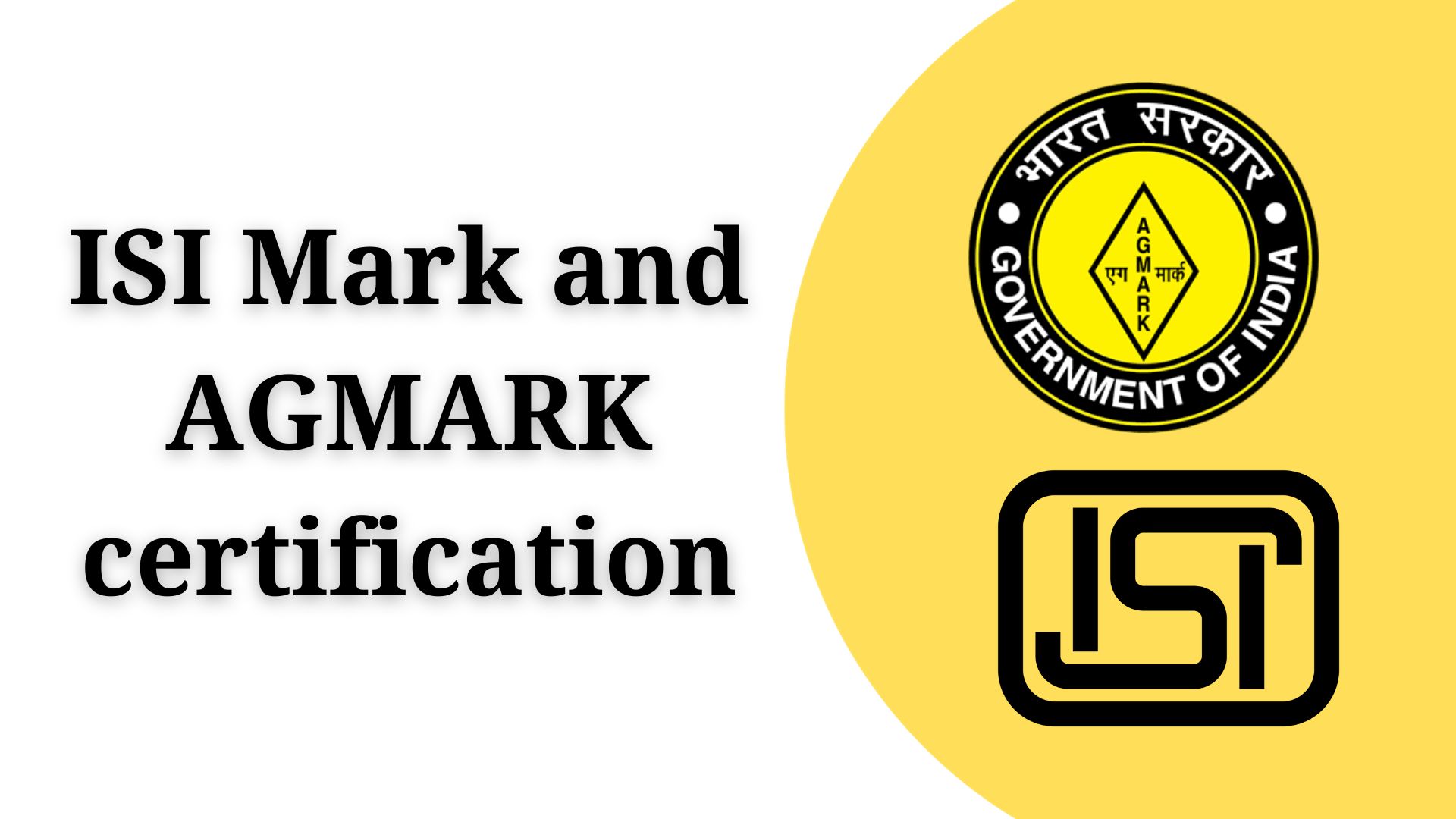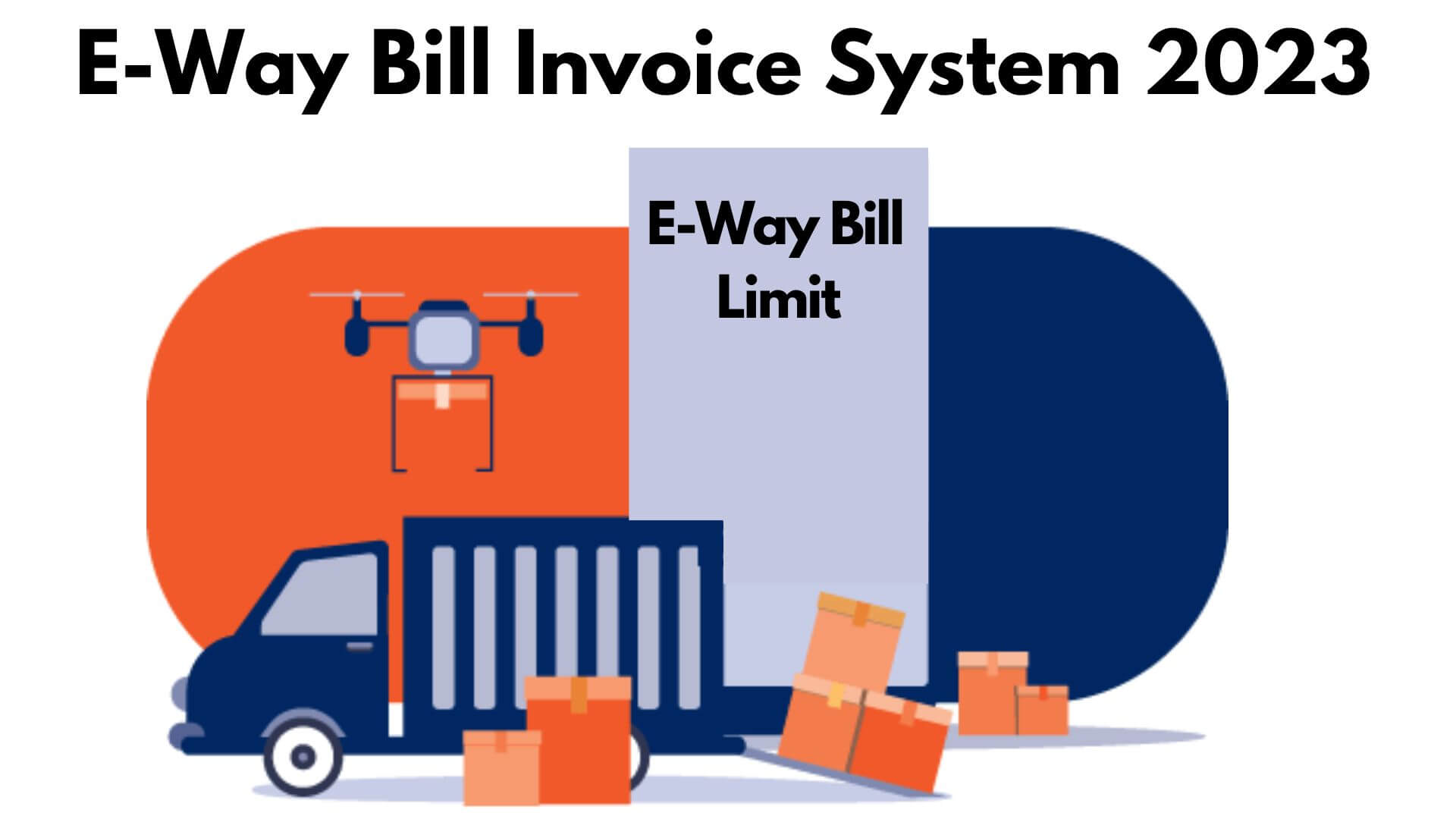Trademark Opposition
Trademark Opposition is a lawful right to challenge a specific Trademark and to file a notice against the mark to the Trial and Appeal Board by paying fee amount. When the application for Trademark Registration in India is applied, it is publicized by the Trademark Registrar in the Trademark Journal, any individual or third person can file a Trademark Opposition to the application of Trademark Registration within four months from the date of advertisement. When an opposition has been filed against your Trademark application, the online status of Trademark Registration will show as "Opposed".
How to Start a Trademark Opposition

- Overview
- Who Can Oppose Trademark Application in India?
- Response to Trademark Opposition
- Process of Trademark Opposition
- Time Limit for Trademark Opposition
- Reasons for the Opposition of Trademark
- What Are the Pre-requisites for Trademark Opposition?
- What Are the Contents of Notice for Trademark Opposition?
- What Are the Benefits of Trademark Opposition?
- FAQs
Overview
Trademark opposition in India comes at a stage after the registrar has approved the trademark application on the grounds of distinctiveness and published the third-party opposition's trademark in the journal. One of the important statuses in respect of a trademark, shown in the website of the Trademark Office is “opposed” for the registration of the said mark becomes dependent on the outcome of the said opposition. The term ‘opposed” really means that the third party, has found the mark objectionable primarily in light of section 9 or 11 or both (and any other provisions of the Trademarks Act), intimates the same writing to the Trademark Office and requests for its refusal. Section 21 of the Trademark Act 1999 clearly elucidates about the opposition. Simply put, a mark predominantly gets opposed either owing to its similarity with an existing mark or due to alleged non-distinctiveness or both.The opposition phase in general is a lengthy legal process and thus the status of a mark which is opposed, might remain so for many months (even more than a year) together until the matter gets decided in a final hearing before the learned Registrar of the Trademark Office.
TRADEMARK:
Before moving towards Trademark opposition, first let discuss a little bit about Trademark. A trademark is a symbol and can be anything from a name, picture, and word to even a label or a sound. Once registered, it can be a precious asset for a business as, with a trademark, the business can project its unique positioning to the consumers.
Registering a trademark is the first step towards protecting your brand name. Your registered trademark is no less than a critical business asset for you. You need to keep a close watch on all the probable attempts by other businesses and individuals to register similar trademarks, even if these are related to other domains.
Whenever a trademark objection is raised, the application status will be marked as ‘Opposed’. In the case of a registered trademark, the same will be marked as ‘Objected’ in the Indian Trademark Registry. A notice will be served to the applicant/trademark user, informing him about the objection and the grounds of opposition therein.
Who Can Oppose Trademark Application in India?
-
Any person can oppose a trademark application filed by an applicant for various reasons during the trademark application stage.
-
According to Section 21 of the Trademark Act, ‘any person’ can oppose a trademark, irrespective of his commercial or personal interest in the matter.
-
A trademark can be countered filed by a customer, member of the public or competitor, or any other person. Also, the person filing the trademark opposition needs to be a prior registered trademark owner.
Response to Trademark Opposition:
Trademark objection reply needs to be filed within two months of receiving the said notice. You need to follow the below-mentioned steps while filing a trademark objection reply-
-
Analyzing the objection: You should study and analyze the trademark objection carefully. Any confusion or ambiguity may lead to incorrect filing of the trademark objection reply.
-
Drafting Of Trademark Objection Reply
The trademark objection reply letter should include the following:
-
A fitting answer to the objection raised with supporting rule of law, precedents and judgments
-
The differences between the trademark of the applicant and the mark in conflict.
-
Other evidence and supporting documents to validate the reply/response.
-
An affidavit stating the usage of the trademark in the applicant’s website and social media channels, media advertisements, publicity material, availability of trademarked products on e-commerce sites, etc. along with related documentary proof.
The draft of the trademark objection reply letter is then filed online on the Trademark e-filing portal.
Process of Trademark Opposition:
-
OPPOSITION NOTICE: Any person can file a notice of opposition on a trademark that appears on the trademark journal within four months from the first date of appearance. It must be filed on Trademark Form 5 in the prescribed manner and filed with the applicable fees.
-
COUNTER-STATEMENT: After the trademark opposition notice is filed with the trademark registrar, the registrar would serve a copy of the trademark opposition notice to the trademark applicant. Within two months of receipt of the trademark, opposition notices the trademark applicant must file the counter statement. If the trademark applicant fails to file the counter statement within specified period, the trademark applications shall be “abandoned”. However, it is necessary to understand trademark registration status.
-
HEARING: After the evidence filing stage is over, the registrar shall send notices to both parties stating the date of hearing, which shall be at least one month after the date of the first notice. The hearing is based on the notice of opposition, the counter-statement filing, and the filed evidence. The registrar hears the matter by the registrar, and if any of the parties does not show up for the hearing, the registrar will rule against him. After the evidence filing stage is over, the registrar shall send notices to both parties stating 4
-
APPEALS: Based on the review of the evidence submitted and the hearing of both the parties, the registrar decides whether the opposition was successful at doing so and, in turn, determines whether the trademark should be registered or not. However, the party aggrieved by the registrar's decision may challenge the same by filing an appeal before the Intellectual property Appellate Board.

Time Limit for Trademark Opposition:
After the trademark advertisement in the Trade Mark Journal, any person can oppose the trademark registration for three months (which may be extended by period not exceeding one month). Trademark opposition filings can be done only at the Trademark Registrar’s office and cannot be taken directly to a Court or the Appellate Board (IPAB).
If a trademark opposition is successful, the registration of the trademark will be refused. If the trademark opposition application is rejected, the brand will be registered.
Reasons for the Opposition of Trademark:
A trademark opposition can be raised under different sections like the absolute grounds, relative grounds, prohibited mark, or even concerning the opposed trademark's proprietorship.
The Indian trademark law does not provide any specific grounds of opposition. There are various reasons a trademark opposition may be opposed mentioned below:
-
The trademark is similar or identical to an earlier or existing registered trademark.
-
The trademark is devoid of distinctive character.
-
The trademark is descriptive.
-
The trademark registration application is made with bad faith.
-
The trademark is customary in the current language and or in the established practices of a business.
-
The trademark is likely to deceive the public or cause confusion.
-
The trademark is contrary to the law or prevented by law.
-
The trademark is prohibited under the Emblem and Names Act, 1950.
-
The trademark contains matters that are likely to hurt any class or section of people's religious feelings.
What Are the Pre-requisites for Trademark Opposition?
The assignor terminates to have his rights, title or any interest in the trademark, the moment assignment deed is executed in favor of the assignee, irrespective of the fact that the name of the assignee has not been updated in the record of the Registrar of trademarks. In the matter of Classic Equipments Pvt. Ltd. vs. Johnson Enterprises, 2009 (41) PTC 385 (Del), it was observed as follows:
The pre-requisites depend on different grounds of the Oppositions. The required documents and details based on different grounds are as follows:
-
The Opposition of Trademark is based on an already or previously registered trademark; the opponent is required to clearly mention the details, application number, and the priority date related to the already registered Trademark.
-
The Opposition is filed by a licensee then the name and address of the licensee. In addition to the details of the licensee, an indication which indicates that licensee is authorized to enter the Opposition of Trademark.
-
In the case where the opposing party is a foreigner, and having no place of business in India, then the name of the opponents and the address for service in India is required.
-
The Opposition of Trademark is based on an already existing well-known trademark or a Trademark having good reputation in the market; the opponent is required to submit any document which will act as evidence of such already existing well-known Trademark. Further, the opponent should mention an indication of the countries where the earlier registered Trademark is recognized to be a well-known existing Trademark. The opponent can also present the proof of the Registration of Trademark or application for Registration of Trademark.
What Are the Contents of Notice for Trademark Opposition?
As per Rule 43 of Trademark Rules, 2017, the notice of Opposition of Trademark should contain the following:
-
The application number of the Trademark against which Opposition is filed;
-
An indication of all the goods or services listed in the application of Trademark against which the notice for Opposition is filed;
-
The name of the applicant for Trademark against whom Opposition is filed;
-
A statement declaring that the Trademark against which Opposition is filed is a well-known Trademark within the Section 11(2) of the Trademark Act, 1999. The countries where the Trademark is already a well-known Trademark should also be stated in the statement;
-
The name of the Opposing Party;
-
The application number of the Opposing Party;
-
The Trademark of the Opposing Party.
What Are the Benefits of Trademark Opposition?
The benefits of Trademark Opposition are as follows:
-
In the creation of a brand, the popularity and demand of the public plays a vital role. It is very important for the approval of a Trademark to consult the common public for the Registration of an applied Trademark.
-
The owners of the Registered Trademarks have an opportunity to stop any other similar or identical Trademark, which can, in the future, hinder or dilute the reputation of their already registered Trademark.
-
The owner can also stop the cause of any possible confusion in the minds of the common public when there is a similar Trademark in the market.
CONCLUSION:
The maintenance and creation of a brand is a big responsibility, and a large amount of funds are needed for the same. Hence, the application for the creation of a brand should pass through a number of checks and scrutiny before getting registered. The Registration helps a brand to prove the validity and distinctiveness in the market. Hence, Trademark Opposition is an essential and critical stage in the registration process of Trademark. The Opposition is one of the most effective remedies to secure and protect your Trademark. The Opposition of Trademark should be filed in the prescribed period; otherwise, it will result in a lapse of the right to file for Opposition. The limitation in time period plays a significant role in awarding the remedy to the person aggrieved. The process of filing for Opposition of Trademark is time-consuming and long-lasting. We at Legal tax have experienced professionals to help you with the process. Our professional will guide you for the process of Trademark Opposition. The professionals will ensure the successful and timely completion of your work.
FAQ's
-
OPPOSITION NOTICE: Any person can file a notice of opposition on a trademark that appears on the trademark journal within four months from the first date of appearance. It must be filed on Trademark Form 5 in the prescribed manner and filed with the applicable fees.
-
COUNTER -STATEMENT: After the trademark opposition notice is filed with the trademark registrar, the registrar would serve a copy of the trademark opposition notice to the trademark applicant. Within two months of receipt of the trademark, opposition notices the trademark applicant must file the counter statement. If the trademark applicant fails to file the counter statement within specified period, the trademark applications shall be “abandoned”. However, it is necessary to understand trademark registration status.
-
HEARING: After the evidence filing stage is over, the registrar shall send notices to both parties stating the date of hearing, which shall be at least one month after the date of the first notice. The hearing is based on the notice of opposition, the counter-statement filing, and the filed evidence. The registrar hears the matter by the registrar, and if any of the parties does not show up for the hearing, the registrar will rule against him. After the evidence filing stage is over, the registrar shall send notices to both parties stating 4
-
APPEALS: Based on the review of the evidence submitted and the hearing of both the parties, the registrar decides whether the opposition was successful at doing so and, in turn, determines whether the trademark should be registered or not. However, the party aggrieved by the registrar's decision may challenge the same by filing an appeal before the Intellectual property Appellate Board.
The pre-requisites depend on different grounds of the Oppositions. The required documents and details based on different grounds are as follows:
-
The Opposition of Trademark is based on an already or previously registered trademark; the opponent is required to clearly mention the details, application number, and the priority date related to the already registered Trademark.
-
The Opposition is filed by a licensee then the name and address of the licensee. In addition to the details of the licensee, an indication which indicates that licensee is authorized to enter the Opposition of Trademark.
-
In the case where the opposing party is a foreigner, and having no place of business in India, then the name of the opponents and the address for service in India is required.
-
The Opposition of Trademark is based on an already existing well-known trademark or a Trademark having good reputation in the market; the opponent is required to submit any document which will act as evidence of such already existing well-known Trademark. Further, the opponent should mention an indication of the countries where the earlier registered Trademark is recognized to be a well-known existing Trademark. The opponent can also present the proof of the Registration of Trademark or application for Registration of Trademark.
As per Rule 43 of Trademark Rules, 2017, the notice of Opposition of Trademark should contain the following:
-
The application number of the Trademark against which Opposition is filed;
-
An indication of all the goods or services listed in the application of Trademark against which the notice for Opposition is filed;
-
The name of the applicant for Trademark against whom Opposition is filed;
-
A statement declaring that the Trademark against which Opposition is filed is a well-known Trademark within the Section 11(2) of the Trademark Act, 1999. The countries where the Trademark is already a well-known Trademark should also be stated in the statement;
-
The name of the Opposing Party;
-
The application number of the Opposing Party;
-
The Trademark of the Opposing Party.
Thereafter, the Opponent is required to file evidence in reply within one month of the receipt of the evidence filed by the Applicant. The said period is extendable by one month.
The Registrar after examining the evidence and hearing both the parties passes a written order. If any party is aggrieved by the order, he/she can file an appeal at the Intellectual Property Appellate Board (IPAB) within three months of its receipt.
The benefits of Trademark Opposition are as follows:
-
In the creation of a brand, the popularity and demand of the public plays a vital role. It is very important for the approval of a Trademark to consult the common public for the Registration of an applied Trademark.
-
The owners of the Registered Trademarks have an opportunity to stop any other similar or identical Trademark, which can, in the future, hinder or dilute the reputation of their already registered Trademark.
-
The owner can also stop the cause of any possible confusion in the minds of the common public when there is a similar Trademark in the market.

Fill Up Application Form

Make Online Payment

Executive will Process Application

Get Confirmation on Mail
What Our Clients Say
associated with

























